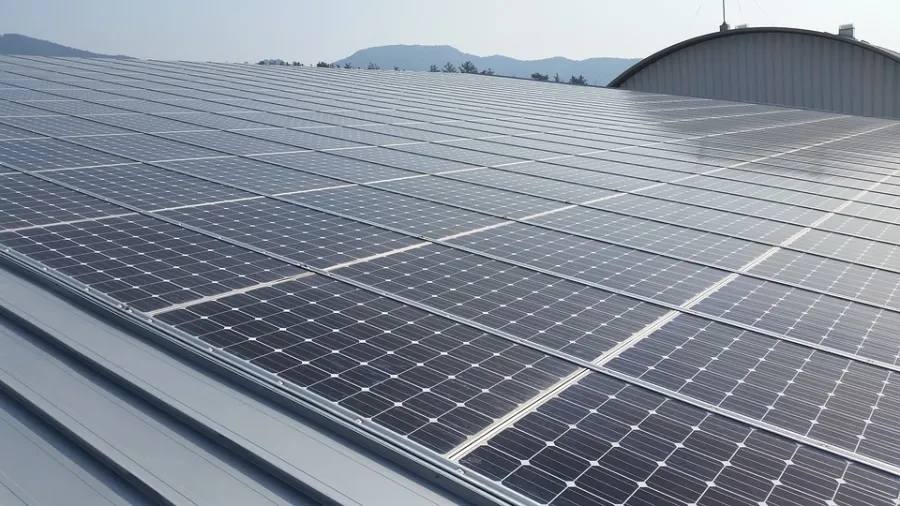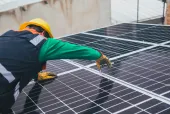
China's solar policy shifts pulled down global renewables investment down by 8%
Solar PV industry curbs dragged capital costs, and consequently, the total investment poured into the sector.
China’s sharp changes in solar power policy helped bring down the total clean energy investment by 8% to $332.1b in 2018, BloombergNEF revealed.
According to a report, solar investment dropped by 24% to $130.8b due to significantly cheaper capital costs. BNEF’s global benchmark for the cost of installing a megawatt of photovoltaic (PV) capacity fell 12% in 2018 as manufacturers slashed selling prices in the face of a glut of PV modules on the world market.
BNEF attributed this to glut to the solar PV sector curbs that China introduced mid-2018. The government acted to cool that country’s solar boom by restricting access for new projects to its feed-in tariff (FIT). The result of this, combined with lower unit costs, was that Chinese solar investment plunged 53% to $40.4b.
Jenny Chase, head of solar analysis at BNEF, commented: “2018 was certainly a difficult year for many solar manufacturers, and for developers in China. However, we estimate that global PV installations increased from 99GW in 2017 to approximately 109GW in 2018, as other countries took advantage of the technology’s fiercely improved competitiveness.”
The 709MW NLC Tangedco PV plant in India was one of the biggest solar projects to get financed in 2018. India is one of the countries with the lowest capital costs per megawatt for photovoltaic plants.
On the other hand, wind investment grew 3% to $128.6b whilst financing for smart meter rollouts and electric vehicle companies also increased.
Offshore wind was a major recipient of clean energy investment last year, attracting $25.7b, up 14% on the previous year. Some of the projects financed were 13 Chinese offshore wind farms starting construction, for a total of approximately $11.4b.
David Hostert, head of wind analysis at BNEF, said: “The balance of activity in offshore is tilting. Countries such as the UK and Germany pioneered this industry and will remain important, but China is taking over as the biggest market and new locations such as Taiwan and the US East Coast are seeing strong interest from developers.”
Onshore wind saw $100.8b of new asset finance globally last year, up 2%. Investment in biomass and waste-to-energy also rose 18% to $6.3b, whilst that in biofuels rallied 47% to $3b.
Geothermal was up 10% at $1.8b, small hydro down 50% at $1.7b, and marine up 16% at $180m. Total investment in utility-scale renewable energy projects and small-scale solar systems worldwide was down 13% YoY at $256.5b, although the gigawatt capacity added increased.
Other categories of investment showed mixed trends in 2018. Corporate research and development spending slipped 6% to $20.9b, whilst government R&D rose 4% to $15b.
There was a 20% increase in public markets investment in specialist clean energy companies, to $10.5b, with the biggest initial public offerings (IPO) including $1.2b for Chinese electric vehicle company NIO, $852m for Chinese electric car battery maker Contemporary Amperex Technology, and $808m for French solar developer Neoen.
Looking at the 2018 clean energy investment numbers by country, China was again the leader, but its total of $100.1b was down 32% on 2017’s record figure because of the plunge in the value of solar commitments.
Jon Moore, chief executive of BNEF, commented: “Once again, the actions of China are playing a major role in the dynamics of the energy transition, helping to drive down solar costs, grow the offshore wind and EV markets and lift venture capital and private equity investment.”
Other Asian countries and territories investing in excess of $2b in clean energy in 2018 were: Japan at $27.2b, down 16%; India at $11.1b, down 21%; Australia at $9.5b, up 6%; South Korea at $5b, up 74%; Vietnam at $3.3b, up 18-fold; and Taiwan at $2.4b, up 134%.













 Advertise
Advertise











